Aquafeeds, other technologies drive industry evolution
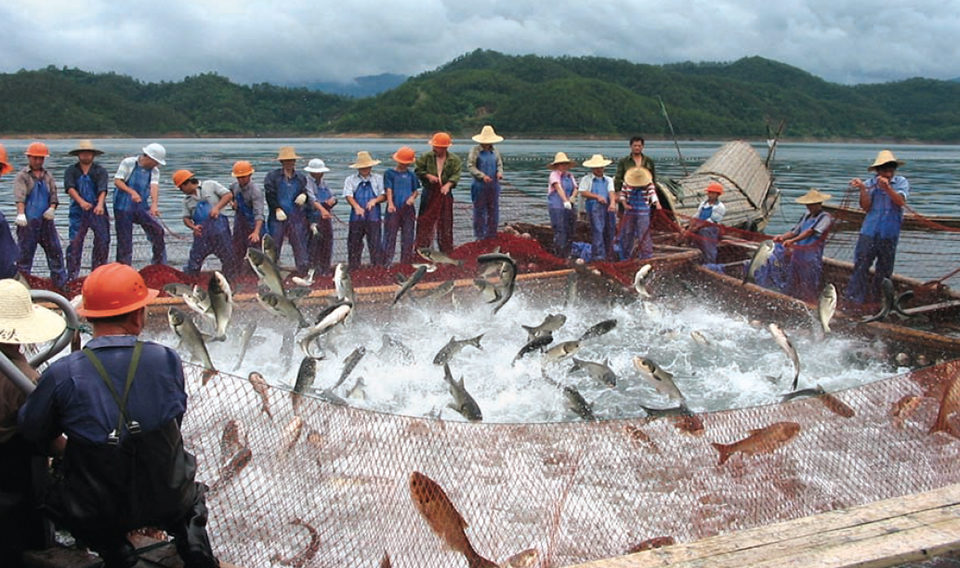
China is the leading aquaculture producer in the world. With a volume of 33.57 million metric tons in 2005, the country contributed about 70 percent of the world’s total aquaculture production and 66 percent of China’s total seafood production. About 60 percent, some 20 million MT, of this total came from freshwater culture. Finfish culture accounts for 91 percent of the total freshwater aquaculture production.
Species diversity
China has the largest number of fish species currently cultured in freshwater ponds or lakes, with Cyprinids (carps) predominating (Fig. 1). The traditional, commonly cultured Cyprinids include grass carp, silver carp, bighead carp, blunt snout bream, crucian carp, common carp, black carp, and mud carp. Culture of the topmouth culter has also become popular in recent years. Production of cultured Cyprinids contributed about 85.5 percent of China’s cultured freshwater finfish production in 2005.
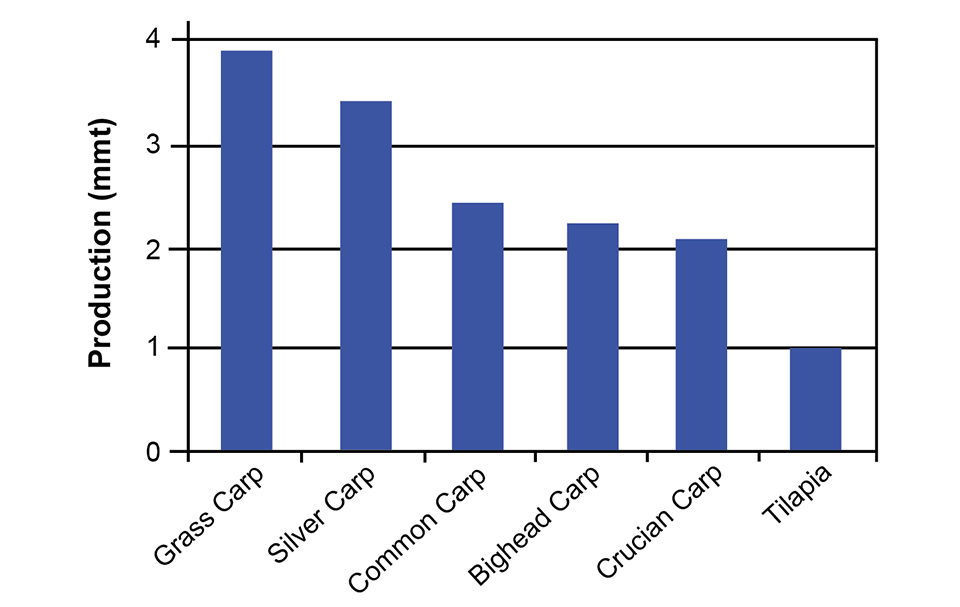
The most important native, noncyprinid species traditionally cultured in China is the Japanese eel. However, many other native species have also been introduced into culture in recent years, including snakehead mullets, mandarin fish, rice field eels, Chinese puffer fish, sturgeons, Chinese catfish and Asian pond loaches.
Some introduced fish species are also playing an increasingly important role in China’s freshwater aquaculture, particularly tilapia (mainly Oreochromis niloticus), large-mouth bass, channel catfish and red pacu. Other introduced fish species include European and American eels, paddlefish, striped bass and various other strains of tilapia.
Polyculture, top species
Chinese freshwater culture is generally characterized by the use of polyculture. A typical traditional polyculture pond is stocked with seven to 10 fish species, mostly Cyprinids with two or three dominating. However, with the rapid development of the aquafeed industry, Chinese finfish culture is switching its polyculture practices to more modern, feed-based monoculture or polyculture with fewer fish species cultured in each pond.
Although feed-based culture technologies established in the past decade greatly stimulated the culture of aquafeed-eating fishes, herbivorous fish species such as grass carp and silver carp are still the most important cultured. Grass carp had production of 3.86 million MT in 2005, while silver carp produced 3.52 million MT. These species were followed by common carp at 2.47 million MT, bighead carp with 2.18 million MT, and crucian carp, which had 2.08 million MT of production volume.
In recent years, tilapia culture has developed very rapidly in China, with an average annual growth rate of 14.75 percent and production of 1.04 million MT in 2005.
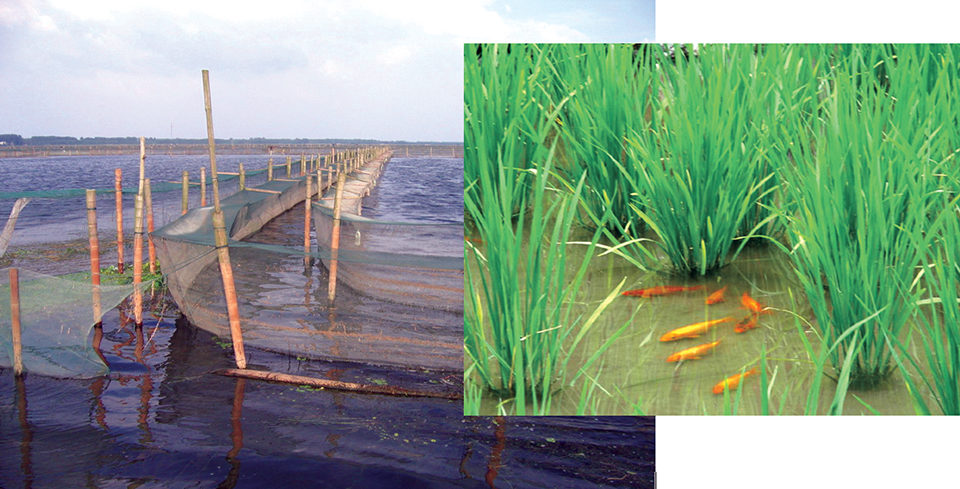
Culture systems
Various culture systems are used to raise freshwater fish, including intensive pond culture, intensive or extensive lake/reservoir culture, cage culture, net pen culture, rice paddy culture, and the so-called factory culture that often uses recirculating systems. Representing over 70 percent of total freshwater aquaculture production, pond culture is the main form of farming, although the total 1.4 million-ha area of the ponds is only about 25 percent of the total freshwater area available to fish culture.
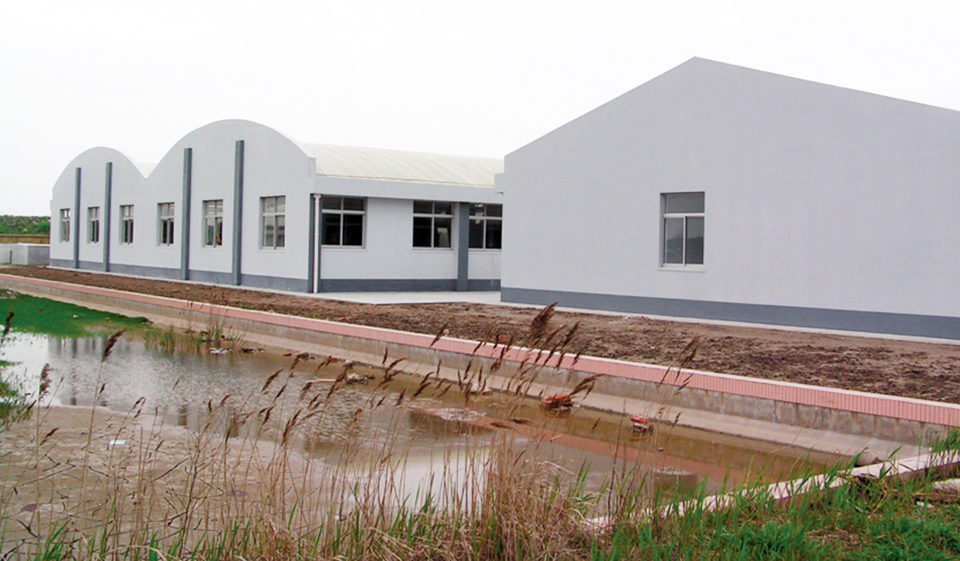
Extensive production
Chinese lakes and reservoirs of more than 600-ha area are often used for extensive farming, while bodies of water with less than 300 ha see intensive fish culture. In 2005, production figures for reservoir and lake culture were 2.23 and 1.23 million MT, respectively – representing 11.15 and 6.14 percent of the year’s total freshwater fish production.
Cage culture in reservoirs or deep lakes, and net pen culture in shallow lakes are also very common. Although annual production volumes from cage and pen culture are only 0.70 and 0.47 million MT, respectively, the two types of aquaculture, together with intensive lake/reservoir fish culture, have received much attention because they are often considered main causes of aquatic eutrophication.
Lake/reservoir fish culture will therefore likely have very limited development in the future. Although practiced on a relatively small scale now, the more environmentally responsible rice paddy culture and land-based factory aquaculture approaches will lead future development in China.
Aquaculture issues
Chinese aquaculture faces such challenges as the deterioration of water quality resulting from eutrophication or water pollution, fish diseases caused by deteriorated water quality, and the degradation of genetic resources due to the lack of selective breeding. All these factors impose significant constraints on the further sustainable development of China’s aquaculture industry.
However, through the establishment of new technologies such as the so-called “ecological aquaculture,” which rehabilitates pond ecosystems by planting aquatic plants; polyculture with various environmental microbes to help consume organic matters; and the adoption of more genetically improved lines, aquaculture in China will continue developing strongly.
(Editor’s Note: This article was originally published in the May/June 2007 print edition of the Global Aquaculture Advocate.)
Now that you've reached the end of the article ...
… please consider supporting GSA’s mission to advance responsible seafood practices through education, advocacy and third-party assurances. The Advocate aims to document the evolution of responsible seafood practices and share the expansive knowledge of our vast network of contributors.
By becoming a Global Seafood Alliance member, you’re ensuring that all of the pre-competitive work we do through member benefits, resources and events can continue. Individual membership costs just $50 a year.
Not a GSA member? Join us.
Authors
-
Dr. Qigen Liu
College of Life Sciences and Technologies
Shanghai Fisheries University
200090 P.R. China[110,99,46,117,100,101,46,117,102,104,115,64,117,105,108,103,113]
-
Dr. Jiale Li
College of Life Sciences and Technologies
Shanghai Fisheries University
200090 P.R. China -
Dr. Wu Wang
College of Life Sciences and Technologies
Shanghai Fisheries University
200090 P.R. China
Tagged With
Related Posts
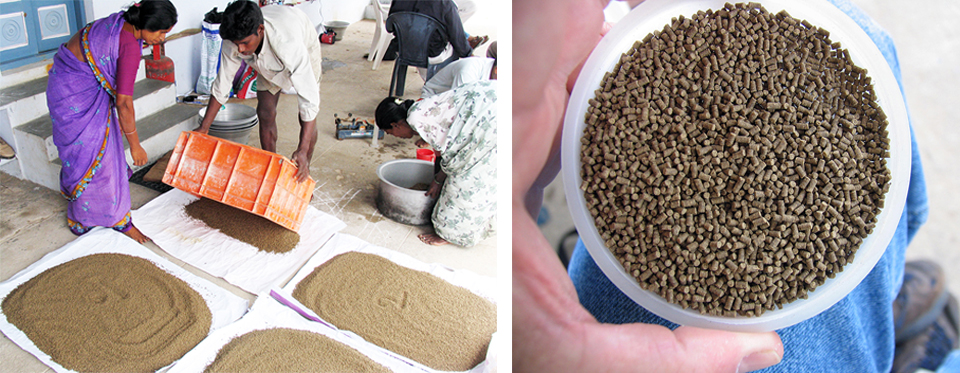
Aquafeeds
A look at India’s fish feed industry
India's fish-farming industry makes limited use of modern feeds, providing potential for the feed sector to grow. Commercial feeds are predominantly used for pangasius farming, followed by a rising popularity in carp culture.
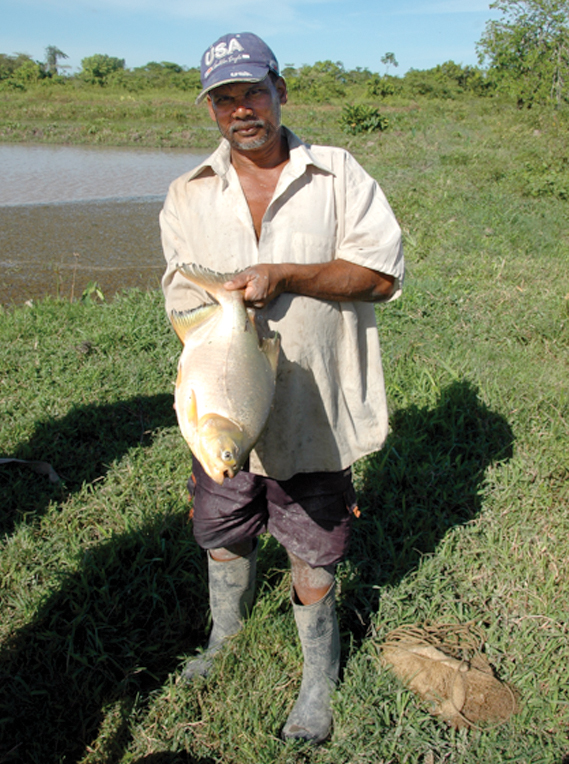
Health & Welfare
A look at aquaculture in Guyana
With its large quantities of water and little industry to pollute it, Guyana has the potential to become a greater player in global aquaculture.

Responsibility
A look at integrated multi-trophic aquaculture
In integrated multi-trophic aquaculture, farmers combine the cultivation of fed species such as finfish or shrimp with extractive seaweeds, aquatic plants and shellfish and other invertebrates that recapture organic and inorganic particulate nutrients for their growth.

Aquafeeds
A look at phospholipids in aquafeeds
Phospholipids are the major constituents of cell membranes and are vital to the normal function of every cell and organ. The inclusion of phospholipids in aquafeeds ensures increased growth, better survival and stress resistance, and prevention of skeletal deformities of larval and juvenile stages of fish and shellfish species.


